#military stalemate
Explore tagged Tumblr posts
Text
🔥 ȘOC! Negocieri de Pace Între Kiev și Moscova: Se Adevărește Profeția Maya? 🔥
Șocante Negocieri de Pace Între Kiev și Moscova! O Profetie Maya în Desfășurare? În mijlocul unui conflict care a zguduit întreaga lume, Kiev și Moscova au inițiat discuții de pace, dar termenii rămân extrem de incerți! Rusia cere recunoașterea teritoriilor anexate, în timp ce Ucraina își apără cu fermitate suveranitatea. Însă acest conflict ar putea ascunde mult mai mult decât se vede la…

View On WordPress
#ancient civilizations#annexed territories#CBCRO#circ și pâine#conflict resolution#CrossBorderChroniclesRo#East-West tension#geopolitical conflict#global crisis#global instability#global politics#historical cycles#international talks#Kiev#Maya calendar#Maya prophecy#military stalemate#Moscow#pandemic comparison#peace negotiations#political game#power struggle#prophecy fulfillment#Russia#short-lived peace#sovereignty#temporary ceasefire#temporary peace#two-year war cycle#Ukraine
0 notes
Text
Read an article by an american diplomat about Biden's foreign policy record and this guy seriously called the handling of the Russia-Ukraine war Biden's greatest achievement. Yessss more people from the client states must be thrown into the imperial meat grinder to serve US interests

#if you're asking yourself what about this horrific grinding stalemate of a war serves US interests well its just that#using ukraine to absorb russian military power serves US interests :)
2 notes
·
View notes
Text
Ask A Genius 1114: And Ukraine, what about the cranes and new life?
Scott Douglas Jacobsen: What are your thoughts on Ukraine? Go. Rick Rosner: Your thoughts are probably better than mine since you just got back from there. Russia still holds 40,000 square miles of Ukraine, while Ukraine controls about 400 square miles of Russia. Ukraine’s been holding its own. Russia hasn’t taken any more territory, but Ukraine hasn’t regained Crimea either. What do you…
#000 square miles of Ukraine#Russia holding 40#Russian troops lack proper training#Ukraine and Russia military stalemate#Ukraine controlling 400 square miles of Russia
0 notes
Text

RUSSIA-UKRAINE WAR - 2023 STALEMATE: UKRAINE’S FAILED COUNTEROFFENSIVE PART 1: This is the first article of a two-part series examining the Ukrainian counteroffensive that launched in June 2023.
Miscalculations, divisions marked offensive planning by U.S., Ukraine
On June 15, in a conference room at NATO headquarters in Brussels, U.S. Defense Secretary Lloyd Austin, flanked by top U.S. commanders, sat around a table with his Ukrainian counterpart, who was joined by aides from Kyiv. The room was heavy with an air of frustration.
Austin, in his deliberate baritone, asked Ukrainian Defense Minister Oleksii Reznikov about Ukraine’s decision-making in the opening days of its long-awaited counteroffensive, pressing him on why his forces weren’t using Western-supplied mine-clearing equipment to enable a larger, mechanized assault, or using smoke to conceal their advances. Despite Russia’s thick defensive lines, Austin said, the Kremlin’s troops weren’t invincible.
By Washington Post staff
The Washington Post - December 4, 2023
Shared from Apple News
•
•

RUSSIA-UKRAINE WAR - 2023 STALEMATE: UKRAINE’S FAILED COUNTEROFFENSIVE PART 2: This is the second article of a two-part series examining the Ukrainian counteroffensive that launched in June 2023.
In Ukraine, a war of incremental gains as counteroffensive stalls
Zaporizhzhia, Ukraine — Ukrainian soldiers in the 47th Separate Mechanized Brigade waited for nightfall before piling — nervous but confident — into their U.S.-provided Bradley Fighting Vehicles. It was June 7 and Ukraine’s long-awaited counteroffensive was about to begin.
The goal for the first 24 hours was to advance nearly nine miles, reaching the village of Robotyne — an initial thrust south toward the larger objective of reclaiming Melitopol, a city near the Sea of Azov, and severing Russian supply lines. Nothing went as planned.
By Washington Post staff
The Washington Post - December 4, 2023
Shared from Apple News
•
•

(Photo: Libkos / AP)
‘We only need some metal things’
Will America abandon Ukraine?
Today Ukraine is fighting Russia alone. American aid — never timely or sufficient, but enough to help keep Ukraine alive and Russian invaders at bay — is about to run out. U.S. shipments will stop in the next few weeks. Without American artillery, ammunition, missile systems, tanks, armored vehicles, humanitarian aid, or funds for reconstruction, Ukraine will be left to face the Russian onslaught with diminishing odds of survival. The Biden administration has asked Congress to vote for another $61 billion in aid for Ukraine. So far, Republicans are refusing. Members plan to leave D.C. for the holidays on December 15. This is a thing for them to do now.
By George Packer
The Atlantic - December 9, 2023
Shared from Apple News
•
•

Ukrainian President Volodymyr Zelensky in Kyiv in May 2023. Ukraine says it is hopeful that U.S. lawmakers will approve new military aid for the country, despite Senate Republicans blocking a package on Wednesday.
(Photo: Ed Ram for The Washington Post)
Ukraine’s Zelensky appears increasingly embattled as U.S. backing wavers
The U.S. Senate’s blocking of aid for Ukraine and the stalled counteroffensive comes as Zelensky seems to be facing more internal criticism.
Kyiv, Ukraine — Anxiety is mounting in Ukraine as disagreements in Washington continue to stall billions of dollars of urgently needed wartime funding — aid that officials here say is crucial to keep the country running as the war with Russia grinds on.
By Isabelle Khurshudyan, Siobhán O’Grady and David L. Stern
The Washington Post - December 9, 2023
Shared from Apple News
•
•

Joe Biden has doubled down on his tough rhetoric, telling Congress that they must vote for aid or let Putin win. President Biden on 6 December 2023.
(Photo: Yuri Gripas/UPI/ Shutterstock)

In early November, Ukraine’s top general, Valerii Zaluzhnyi, admitted to an interviewer that the war was at a stalemate.
(Photo: Facebook/CinCAFU/photos)
Opinion: At this critical moment for Ukraine, Biden must face the truth – and rethink his strategy.
As support for US aid falters and an election looms, the White House needs a narrative based on reality, not rhetoric.
Opinion by Emma Ashford, senior fellow with the Reimagining US Grand Strategy programme at the Stimson Center, Washington DC
The Guardian - December 9, 2023
Shared from Apple News
•
#Russia-Ukraine war - 2023 stalemate: Ukraine’s failed counteroffensive#Military weapons delays#U.S. continued funding of Ukraine is uncertain#Democracy vs authoritarianism
0 notes
Text
Humans are weird: A bad death
The Nostro’moh live for battle.
Comprised of thick overlapping muscles and with a height of nine feet they certainly were the imposing warrior gods they claimed to be. In combat they donned suits of armor that could deflect a cannon blast at point blank range before they ripped apart the same tank with their bare hands. Even in space their fleets were designed with thicker armor and extensive boarding pods to allow them to meet their foes face to face.
They carved out a sizable chunk of territory in their own right and had several client species under their thrall to handle to more mundane aspects of their empire. It would be safe to say they were what the humans would call “Modern day Spartans.”
To the galactic community at large they were a nuisance that would saber rattle every now and then, launch some minor raids or attacks, and then retreat back to their borders with their mild gains. Their victims certainly had the military power to invade and put an end to the Nostro’moh threat, but it was calculated that the loss of life in such an endeavor would far outweigh the damages such the raids carried out into their territory. That was until the Nostro’moh stopped raiding and began conquering.
Without warning the Nostro’moh began a massive campaign of conquest. Within the first month they had taken three systems and destroyed multiple fleets that were caught off guard by the suddenness of the attack. Relief forces were deployed along with fleets but by that time the Nostro’moh had deployed most of their ground forces and were holding their conquered worlds hostage.
Relief forces could not bombard the planet given their own civilian populations were being used as living shields, nor were they committed to deploying their own ground forces as they were under no illusion what would happen to them when deployed against the Nostro’moh.
This stalemate continued for some time until the invaded species reached out for assistance and the Terran Confederation answered the call.
Broadcasting on all frequencies, the Terran’s announced that a massive relief force had been dispatched and that it would within three days. In that time the Terran’s demanded the Nostro’moh leave the conquered systems or else they all would be annihilated. This level of boasting both intrigued and insulted the Nostro’moh and so they responded by saying if the Terran’s could defeat them in a fleet battle by themselves they would leave.
To the surprise of all the Terran’s agreed.
The system of Demula was chosen and both fleets were set to gather there for one ultimate confrontation. The entirety of the Nostro’moh navy and ground forces were assembled and prepared to board and eviscerate their foes in brutal boarding actions.
The allocated time came and the Nostro’moh fleet exited their jump into the system only to find a single human ship present.
“I am told that there is no greater honor for one of your kind then that of a honorable death on the battlefield, and no greater dishonor than to die forgotten.” A transmission came in from the human ship to every vessel.
“Who is this?!” the Nostro’moh commander demanded.
There was a long silence before the reply came and for the first time in their lives sent a chill down the spine of every Nostro’moh.
“I am death, the destroyer of worlds. Look upon my works and tremble.”
With that every door and hatch on the Nostro’moh ships opened and the atmosphere was violently sucked out. Millions died screaming into a void that would never hear them, their organs freezing and rupturing like exploding stars all the while the lone human ship slowly drifted away. They would not even bother to watch the massacre they had created as they made their jump out of system.
For all the Nostro’moh prowess in combat their computer coding skills were childish at best, relying on their conquered thralls to handle the technical aspects. Coding that was easily cracked by Terran intelligence within the first encounter and they had quietly kept it in their back pocket until such a time.
With a few strikes of a keyboard the Nostro’moh computer systems were overridden and their threat was extinguished once and for all.
No one outside of the Demula system knew what happened; only that an entire war armada of Nostro’moh went in against a lone human ship and only the human emerged. The Nostro’moh domain all but imploded from the sudden loss of fighting force and from that day forward they kept a wide berth from anything Terran.
#humans are weird#humans are insane#humans are space oddities#scifi#humans are space orcs#story#writing#original writing#niqhtlord01
240 notes
·
View notes
Text
potential idea for a tfone starop fic bc i haven't seen much of those around:
i love the idea of a post tfone story where optimus and megatron are in a military stalemate, and things are looking ugly. optimus can't reason with megatron, but he also doesn't wanna launch an offensive which could lead to mass casualties, autobot or decepticon. he has no idea where to go from here.
cue a surprise visit from the last person optimus expected. as it turns out, starscream is still pissed that megatron humiliated him in front of the entire high guard, not to mention bearing the brunt of megatron's anger when things go sideways. starscream believes in the strength of one bot over another, and by that logic, there's really only one bot who's strong enough to put megatron in his place. (not to mention, orion forced d16 to spare him during the fight, and he hasn't forgotten that.)
optimus isn't sure what to think, but starscream gives him vital information, info optimus can use to launch a sabotage that could disrupt the decepticons with minimal casualties. optimus goes for it, and to his surprise, it works. starscream wasn't lying after all.
thus begins a slow burn as starscream and optimus continue to have their clandestine meetings, with starscream being optimus' newest double agent, and optimus trying to figure out what starscream's true motive is behind everything. of course, starscream tells optimus that he wants control of the high guard again, but optimus knows that there's another reason behind it. and starscream isn't about to tell him what it is anytime soon.
#hint: the second reason is that starscream is down bad for the newest prime and hates himself for it#he still has a bad taste in his mouth from sentinel being a false prime and all#but he also wants optimus to slam him into a wall so he's super conflicted and trying to hide it#i wish i had the motivation to write fic lmao#transformers#transformers one#starscream#optimus prime#tfone starscream#tfone optimus prime#starop#starscream x optimus prime#starprime#maccadam#dqss
115 notes
·
View notes
Text
Arms and Armor of the Hallstatt Celts: A (not-so) Brief Overview
The Hallstatt culture is an archaeologically-defined material culture group. The typesite for this group is in Hallstatt, Austria, where a deep salt mine which had been in use since the Neolithic served as the lifeblood of the local community. A substantial cemetery of approximately 1,300 burials near the mine has helped to clearly define artistic trends associated with this cultural group. The culture is associated with early Celtic or proto-Celtic language speaking groups, and for a long time, was thought to have been the origin of the proto-celtic language. This idea has since been debunked, as it is now known the first proto-Celtic speakers predated the Hallstatt culture.
The Hallstatt culture is divided into four phases, A-D (henceforth abbreviated as Ha. A-D). The first two of these phases are associated with the end of the bronze age in the region, the last two, with the beginning of the iron age.

Since the defining of the culture in 1846, Hallstatt influence has been found from Eastern France to Hungary, as far south as Serbia and as far North as Poland. The core Hallstatt region covers much of Austria and Southern Germany. By the Ha. C period, distinct practices had arisen in the Hallstatt sphere of influence: distinct enough for academics to split the culture into two “zones”, the East and the West.

Unfortunately, due to the antiquity of this culture and the utter lack of any written records concerning them, the archaeological record is both relatively thin, and the only source of information available for these people. As such, in constructing a timeline of Hallstatt arms and armor, there will be substantial gaps which we can only hope will be filled by future discoveries.
Armor
Three types of armor are commonly found in Hallstatt contexts: belts, cuirasses, and helmets.
That broad belts (both of leather and of bronze) are considered armor in the ancient Mediterranean is clear from references in which these items are placed in context with other armor. In the Iliad, for example, in book 7 after Ajax and Hector meet on the field of battle and fight to a stalemate, they exchange equipment. Hector “gave over his silver-studded sword, bringing with it the sheath and well-cut baldric” (l. 303-304), while Ajax reciprocated with “his war-belt bright with crimson” (l. 305). Additionally, a short list of military equipment issued by the Neo-Assyrian empire recovered in Tel Halaf lists 10 leather belts alongside bows, swords, spears, and other arms and armor.
A number of bronze and gold belt plates survive from both the Eastern and Western zones, though most of these plates date to the Ha. D period.
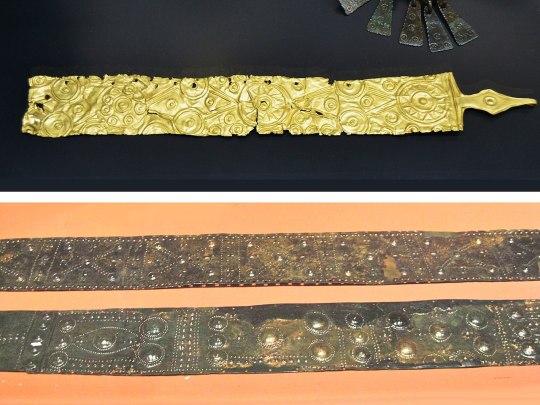
While the majority of these plates are decorated with embossed and incised geometric patterns, some (particularly from the Eastern zone) include scenes of warriors on foot and on horseback.
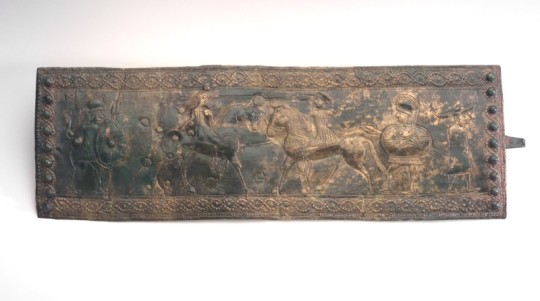
The cuirasses of the Hallstatt period exhibit an interesting progression. In their most basic form, these bronze cuirasses remain essentially the same from Ha. A-D. They are characterized by essentially simple forms: a tubular breast and backplate which terminates at the waist and includes a tall standing collar to defend the neck. The earliest examples, however, include substantial embossed decoration in much the same manner as appears on the belt plates.
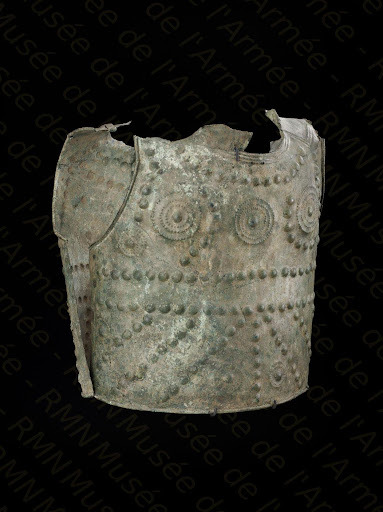
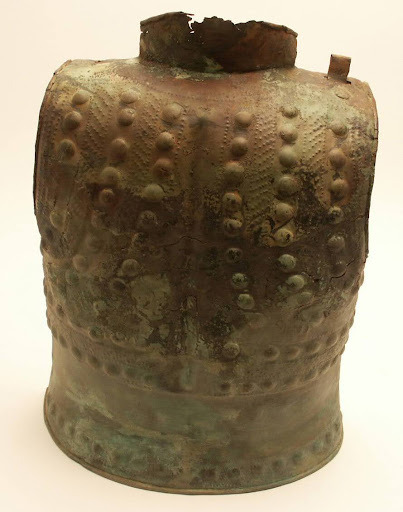
Only in the late Ha. B to early Ha. C period does this decoration begin to take on a more anatomical form; a group of seven cuirasses recovered in Marmesse, France in 1974 shows this evolution nicely. These cuirasses retain the same form, though a slight taper is now evident near the waist. The circular embossing closely resembles that of the previous period, however embossed lines are now apparent, and the placement of the embossing is such as to evoke the musculature of the warrior wearing it.
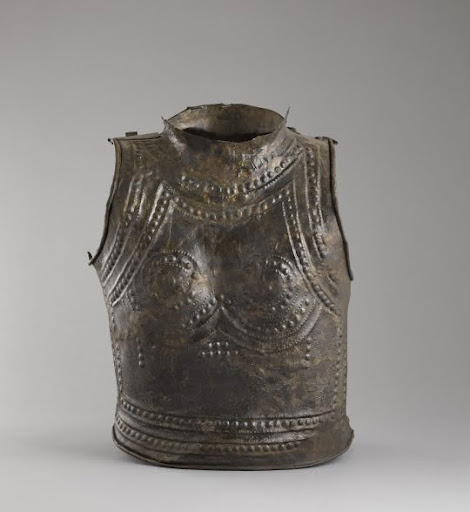

The final stage of the cuirasse’s evolution arrives in Ha. D. This form is much more plain, lacking the apparent horror vacui which typified earlier iterations of this style. Instead, the anatomical element is even more pronounced: embossing emphasizes the warrior’s pectoral and abdominal muscles, and additional circular bronze plates are riveted to the upper chest to simulate nipples.
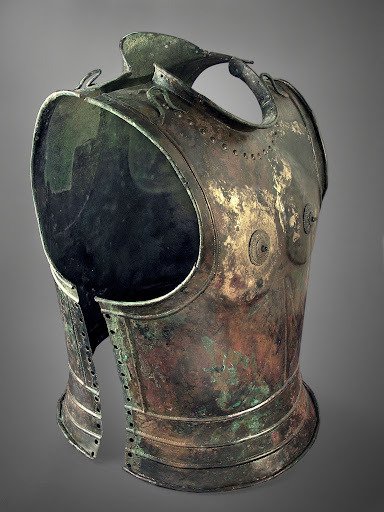
The final element of armor with substantial enough evidence in a Hallstatt context to be addressed is the helmet. Unfortunately, surviving helmets are extremely scarce, and there is no pictorial evidence to consult prior to the Ha. D period.
Four helmet types appear both archaeologically and artistically in Hallstatt contexts. We will call these the crested, the plated, the double-crested, and the Negau.
Only one artistic example of the crested helmet is to be found, and no archaeological examples. It is to be found on a grave good in the shape of a wagon adorned with many figures made ca. 600 BC and recovered in Strettweg, Austria.
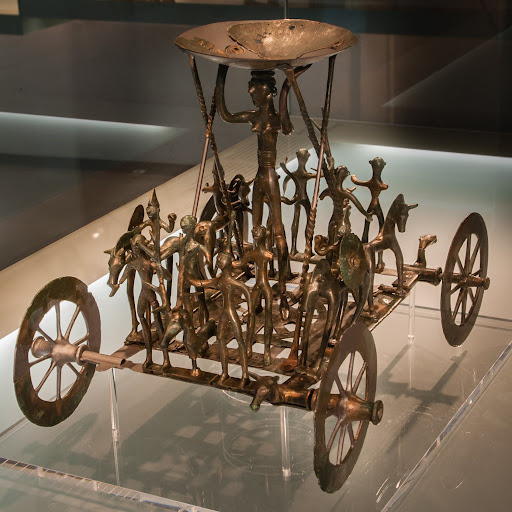
A find from Normandy (outside the Hallstatt sphere of influence) dated ca. 1200-700 BC shows what this type of helmet may have looked like.

The plated type is nearly as obscure, represented by only a single survival and a single artwork. The helmet, recovered in Šentvid, Slovenia and dated ca. 800-450 BC, is curious for the distinct pearly texture of its surface.
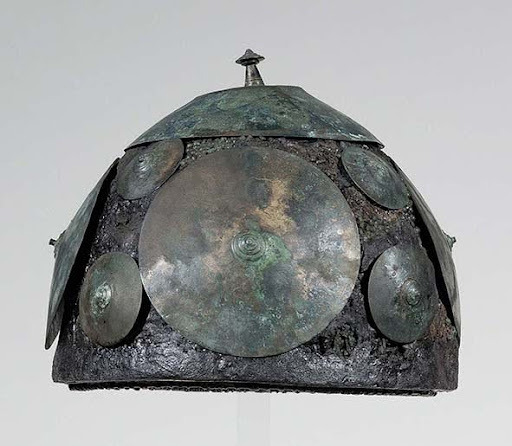
A number of similar helmets appear on a situla recovered from the Certosa Necropolis in modern Bologna, Italy. This situla is dated ca. 600 BC, and bears a striking resemblance to other situlae found in Hallstatt contexts.
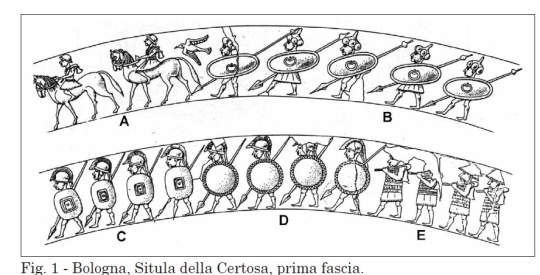
The most well attested form of Hallstatt helmet is the double-crested type. This type appears with the onset of Ha. D, and sees use until the end of the Hallstatt period. It is attested to by several survivals


and numerous depictions on a number of situlae
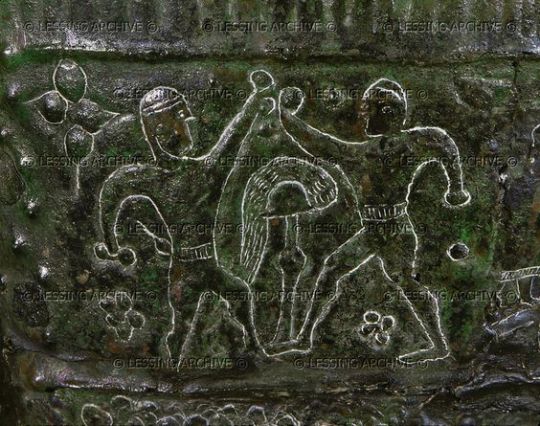
and belt plates.
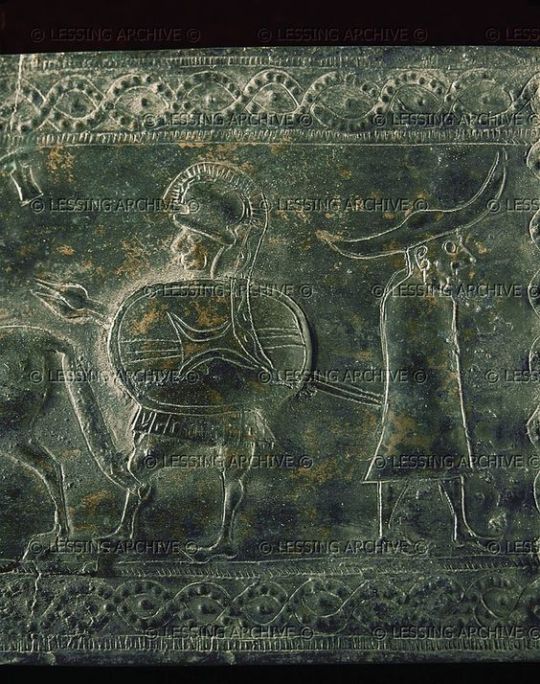
This type is so-called for the twin crests that adorn the helmet’s skull; crests which, as is attested by the pictorial evidence, served as anchors to large plumes likely made from horse hair.
The final type is named for a town in Slovenia where a large cache of helmets of this type was found in 1812. The Negau type appears at the very tail end of Ha. D, and primarily in Etruscan and Italic contexts. However a number of finds (including the eponymous horde) come from regions of Hallstatt (and eventually La Téne) influence.
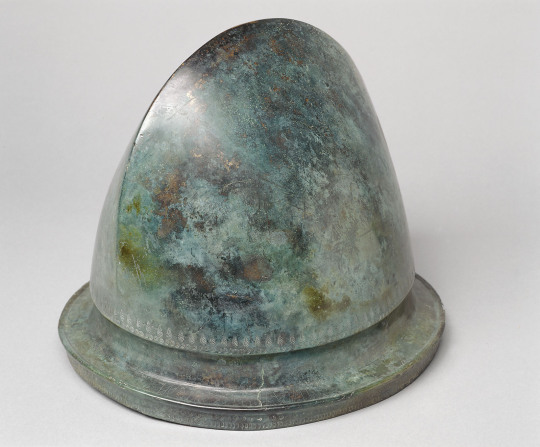
Weapons
The weapons which can be found in Hallstatt contexts are very much the same as those found elsewhere in Europe, consisting primarily on spears, axes, swords, and daggers. The spears and axes of the period are very similar to those found elsewhere in Europe and across the Mediterranean in the late bronze to early iron age, and as such will not be discussed further.


Indeed, even the swords of the Hallstatt bronze age (Ha. A-B) bear no significant differences from other swords found in Central and Western Europe at the time.
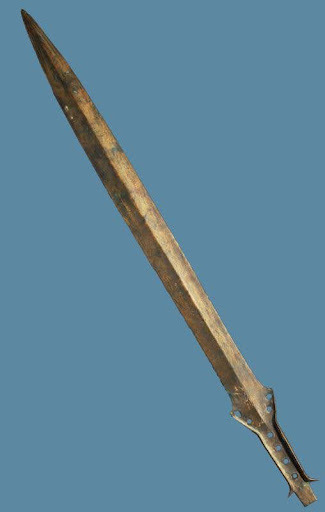
It is not until Ha. C, and the advent of the iron age, when two new types unique to the culture emerge. Though similar, these sword types, called Gündlingen
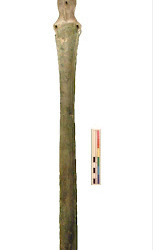
and Mindelheim, are distinguished by a number of factors.

First and foremost is size, with Mindelheim swords averaging around 85 cm or 33.5 in in length, while the Gündlingen type only averages 70-75 cm (27.5-29.5 in). Another striking feature of the Mindelheim type which is almost non-existent on Gündlingen swords is a pair of deep grooves on either side of the blade. Additionally, Gündlingen swords are only ever found in bronze, while Mindelheim can be found in either bronze or iron. Gündlingen swords seem to have been tremendously greater in popularity, with only 27 examples of the Mindelheim type being known to over 240 of the Gündlingen. There is also a geographical element: the majority of Mindelheim swords have been found in the east from Austria to Germany, Poland, and as far north as Sweden. Gündlingen swords, by contrast, have mostly been found in the west, as far as Britain and Ireland. Neither type, however, can be found in the core Hallstatt Regions after the advent of Ha. D, when daggers become the primary funerary good of the elite.
Daggers, of course, were not unknown in Hallstatt regions prior to 620 BC. A number of survivals from Ha. A-B attest to the fact that single-edged daggers were popular.

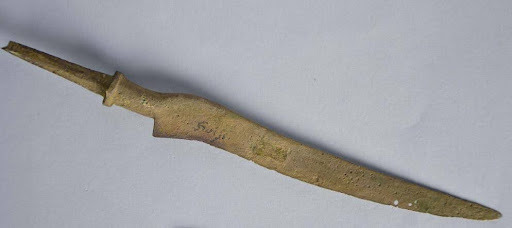
With the advent of the iron age and the rise in popularity of the peculiar Hallstatt sword types, daggers become more rare, until once again they spring back to the fore in Ha. D. At this time, a particular dagger type is almost ubiquitous. This dagger has long, straight quillons mirrored by a tubular pommel. The grip is thin, and the blade is broad and double-edged. This same basic form is present, both plain and with various embellishments, until the end of the Hallstatt period.

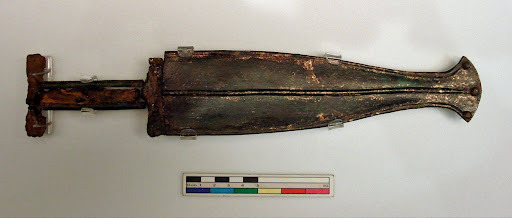
#arms and armor#weapons#armor#ancient history#hallstatt culture#celts#iron age#art#history#ancient celts#sword#axe#dagger#spear
155 notes
·
View notes
Text
Modern Military Uniform of the United Empire (Dungeon Meshi modern AU)



AO3 Version here!
AEGIS
In my fic, “Show Me How to Get Off the Ground,” Mithrun was once a member of an elite military unit, the Advanced Expedition Group for Intelligence and Security, or AEGIS.
Most civilians refer to them as “the Canaries” instead, a pejorative nickname that has become so well-known that most people don’t realize that it isn’t the unit’s real name, or that it’s an insult. Even AEGIS members sometimes use it.
The nickname is a reference to the yellow bird on the AEGIS logo, which looks like a canary, the bird that coal miners famously use to detect gas leaks. The canary warns the miners of the presence of dangerous gasses by dying, implying that AEGIS members frequently die while doing their duty, and that the government treats them like they are disposable.
The bird featured in the AEGIS logo is actually a skylark, which is one of the many birds that are associated with the elven goddess of warfare and wisdom, Atana. Skylarks are the first birds to sing in the morning, and so they are believed to bring news quickly. Every morning, Atana’s skylark returns to her, and sings the latest news from the war front. The aegis was also a device carried by Atana, usually depicted as a shield or armor made of goat skin, and sometimes decorated with the head of a defeated enemy or monster.
(In the real world, the aegis was either a shield or armor made of goat skin, used by Athena or Zeus. It often had a gorgon's head on it.)
AEGIS operatives are commissioned officers from other branches of the United Empire’s military who have been scouted by AEGIS for their special skills. They are put through extremely advanced magical, military and espionage training, and are considered some of the most elite soldiers in the world. Because all AEGIS agents are selected from commissioned officers, the vast majority of them come from elven nobility.
AEGIS specializes in undercover spy work done behind enemy lines. Because of this, they don’t have a field uniform since they spend most of their time in disguise, dressed like ordinary people. They only wear their formal dress uniform while they are at their home base, doing training, administrative work, or preparing for their next undercover mission.
MISC LORE
ATANA (𐀀𐀲𐀙)
Atana is one of the most popular gods in the United Empire. She’s strongly associated with the capital city and the royal family. She’s usually depicted as a beautiful elven woman with obsidian skin, white hair, red eyes, multiple arms, and wearing nothing but an aegis. Each arm bears a different weapon or tool, and her face is always serene, even when she is smiting her enemies. She’s usually shown surrounded by many different types of bird, and in ancient art, she sometimes has a bird’s head.
She is the goddess of wisdom and warfare, and most people consider her the “primary” god of the elven pantheon, and other gods are usually treated as subordinate to her. Atana embodies elven virtues such as intelligence, cunning, charisma, skill with magic, and stoicism.
(Atana is a fusion of the real-world goddesses Athena and Durga.)
THE GREAT WAR (1932-2000)
Sometimes called “the great war between the long and short-lived races,” this war began with the Far Eastern Alliance attacking the United Empire’s colonies in the Eastern Archipelago to reclaim what they saw as territory that belonged to them. After 68 years, the Great War ended in a stalemate, with both sides committing atrocities, and both conceding and gaining territory.
The Great War had a huge impact on the relationship between the long and short-lived races, and technology and magic developed during the war has shaped the modern world into what it is in the story.
#dungeon meshi#delicious in dungeon#mithrun#fanfic#college au#my art#kabumisu#kabrun#kabrumithrun#show me how extras
166 notes
·
View notes
Text
So with TFONE now on streaming, it’s now number 1 on P+, and introduces audiences to the modern version of the origins of the Great War.
But how did the Great War start before hand?
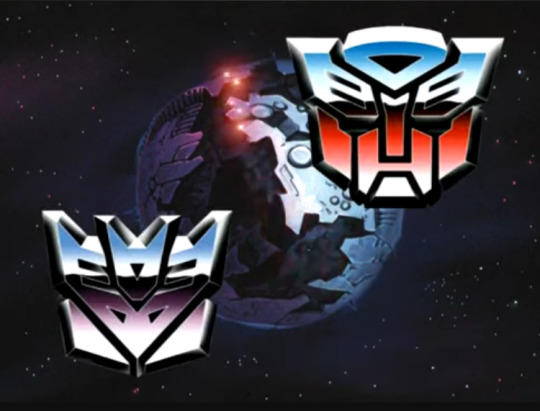
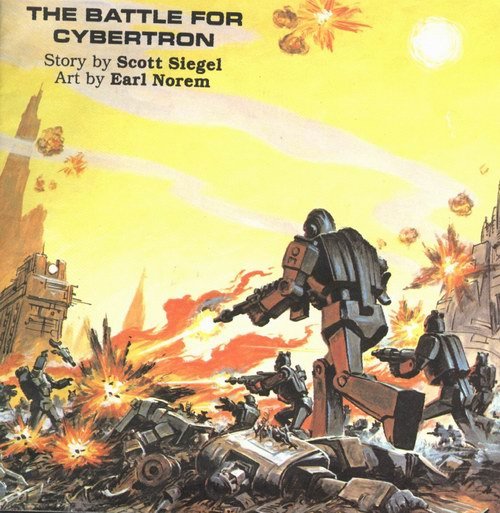
For the most part, it’s pretty simple: Most series revolve around both factions fighting over energy sources when we first meet the Transformers. This power struggle would more often than not depict the war stalemating due to an energy crisis or the energy crisis being part of the reason the war started to begin with.
Occasionally the question is brought up why the Autobots and Decepticons can’t get along…
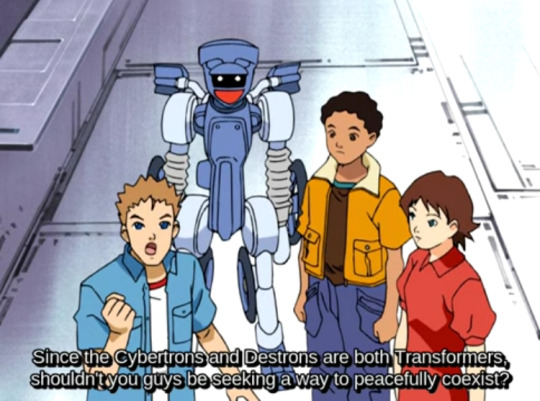
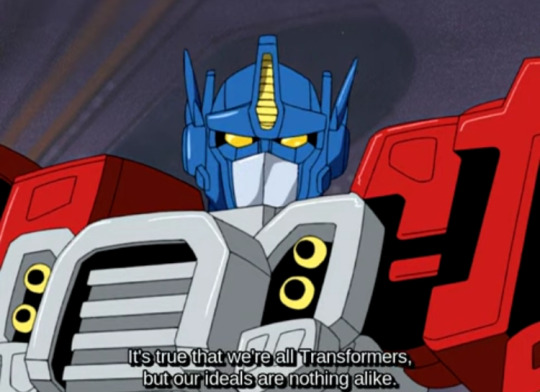
The Decepticons are pretty typically war mongering villains, wanting to pillage and plunder the galaxy to rule over it, while the Autobots oppose them for the good of Cybertron and other innocent lifeforms caught in the conflict.
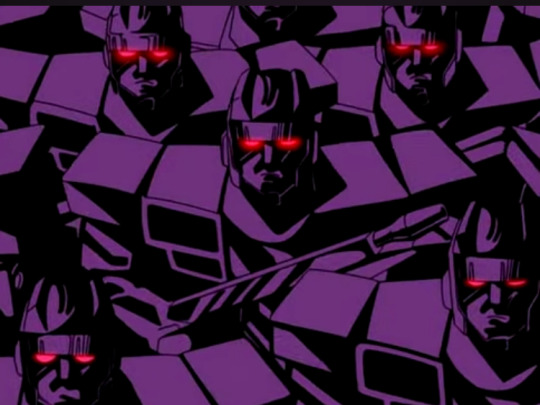
For the most part, the cartoons don’t divulge too much into any deeper ideological differences, the Decepticons want power and will hurt people to get it, the Autobots want to protect. That’s about the long and short of it.
The original cartoon and some comics would later explain this is a genetic difference due to their creation. The Quintessons built the robots to be Consumer Goods and Military Hardware, with the Military robots desiring power and conquest some time after the Quintessons were chased off Cybertron. The comics would suggest the Decepticons are a natural yang to the Autobots’ Yin, futher established with the ancient evil mechanoid, Liege Maximo, being the one who the Decepticons descended from. Unlike today, most media would cast Megatron and Optimus as simply being the current leaders of their respective sides, with Optimus coming into the battle a little later after Megatron was established. Likewise, both would have successors, like RatBat and Bludgeon in the comics or Deathsaurus and Violenjiger in anime while the Autobots had Grimlock, Rodimus Prime, Star Saber and Dai Atlas. There clearly was an intent for a line of succession that today is mostly ignored.
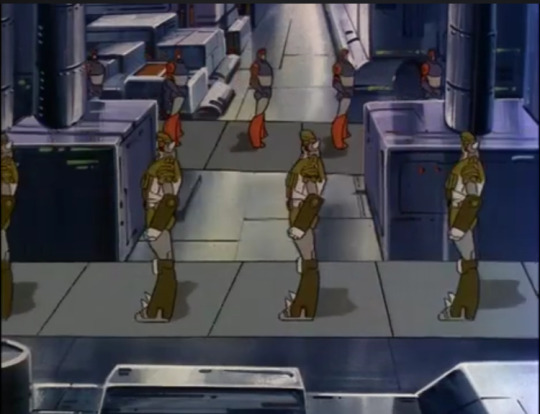
Anyway, the 80’s cartoon was very consistent that the Decepticons were the cause of the conflict, and that Cybertron was plagued with several wars prior to Optimus and Megatron’s time, with each side declaring victory at various points.
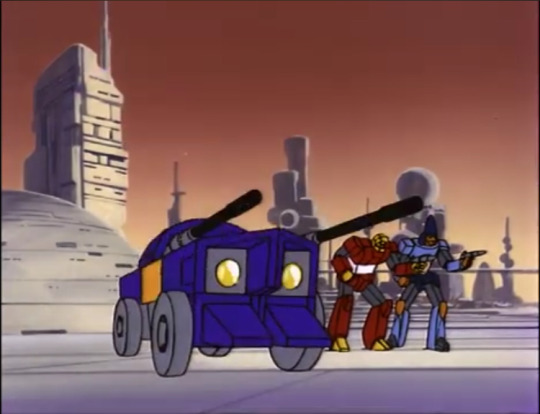
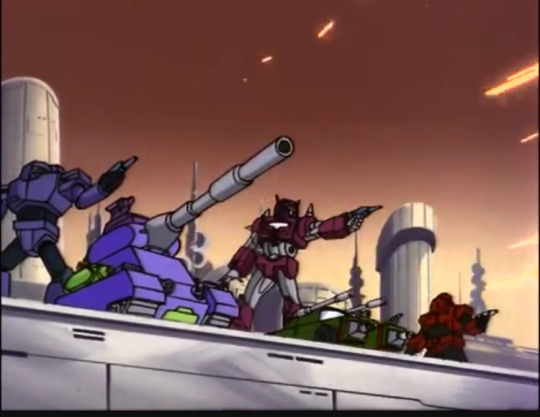
Curiously, an aborted concept prior to the 80’s movie would’ve explained the Decepticons were a separate alien robot race that invaded Cybertron in its prehistory, which would’ve greatly changed things had that been retained.
While the Marvel Comics would mostly retain ideas from the carton, the earlier issues would reveal Transforming was a war time invention of the Decepticons, which the Autobots would later copy. This was of course retconned later with the Primus origin story, while the cartoon would show Transforming as an Autobot invention during the war.
The UK comics would attempt to elaborate the origins of the Decepticons by depicting the athletic Megatron and his early followers being survivors of their destroyed city states during early conflicts over dwindling energy resources on Cybertron. While Optimus and Megatron were former athletic rivals, their connection and rivalry became more solidified during war time.
Cartoons would largely stick to the simpler direction of Autobots and Decepticons being morally opposed, one Heroic and Good, the other Dastardly and Evil.
Japanese media in particular goes pretty hard in this direction where the Autobots and their Maximal descendants are pretty firmly established as peace keepers and heroic ambassadors of justice, helping other races evolve and grow by pooling technology and resources, resulting in Autobot City on Earth, Earth Defense Command and collaborations with other organic and mechanical races. The Decepticons meanwhile are a corrosive force aiming for wanton destruction and power lust, led by various so called Emperors of Destruction like Scorponok and Deathsaurus post Galvatron. The only real exception to this in Japanese media was the reveal Deathsaurus’ Decepticons were only fighting to keep their families alive aboard Deathsaurus’ fortress. His wife kept tabs on things there and was actually kind of a sweetheart, though this is only unique to the manga. Anime Deathsaurus had no family and was hellbent on wanting to blow up Earth to prove a point out of spite.
Armada is pry the only time where the question was asked as to why both sides are fighting, to the point the modern Autobots and Decepticons ask this themselves and show uncertainty as to what both were originally fighting for in the first place. The show would establish that while the war started similarly to G1, the sudden appearance of the evolution granting Mini-Cons aggravated things further.

The anime would later explain the Mini-Cons, and his Acolyte Sideways, were created by Unicron as a means to keep the war going, as the anger and hatred of the war sustained him.
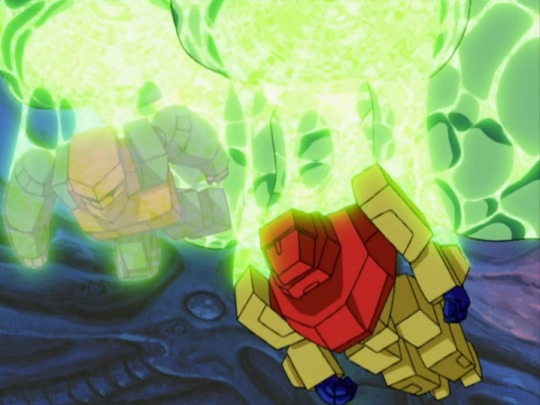
Unicron somewhat rightly called out both factions as merely being war machines that loved fighting and wouldn’t know what to do with themselves outside of that environment. It gave Optimus pause, and Galvatron seems to silently acknowledge this is true to some extent, but Optimus still values what he feels the Autobots have been fighting for thanks to the humans and Mini-Cons: peace for all. Optimus will fight, to eradicate the evil plaguing Cybertron in Unicron and those among the Decepticons who won’t quit.
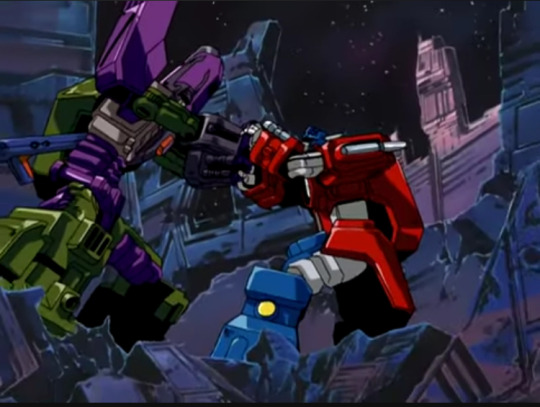
Thanks to a time paradox that saw Rad, Carlos and Alexis travel to the era of the Mini-Cons’ creation and bond with them back then, this ensured Unicron and the Decepticons’ ambitions would unravel in the future, seeing the Mini-Cons gradually evolve into beings celebrating peace rather than just being “smart tools” for war time.
What makes it funnier for Armada, is the Dreamwave version of events featured a short comic about peace ambassadors coming to Cybertron to attempt to diffuse the situation.

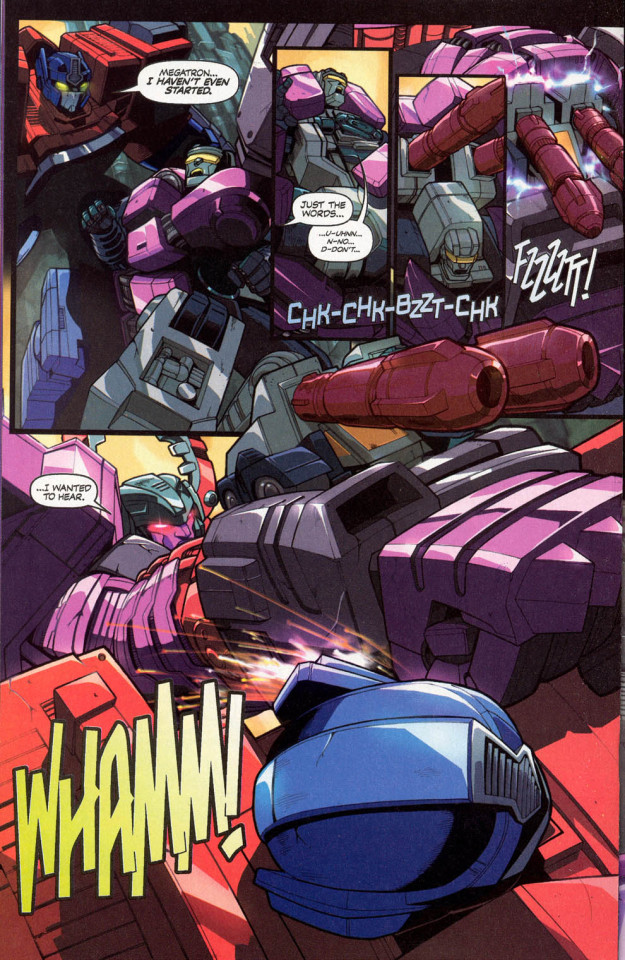
The surviving ambassador hoped it would work itself out and got the heck out of Cybertron.
While the Great War was still the main war, other series would state Cybertron was constantly at war, with the Great War simply being the current one. Past wars, like the cartoon, were either waged by the Autobots and Decepticons’ ancestors or caused by an alien invasion by the Quintessons or other races with an axe to grind with Cybertron.
The Bay films would famously introduce the life giving Allspark which for a lot of media, became the primary reason why the Autobots and Decepticons went to war. The Decepticons wanted to abuse its power for their own gain, like the Skeksis wanted with the Dark Crystal, while the Autobots couldn’t let that happen, seeing the relic ejected from Cybertron, condemning it to a slow death until the relic was found on Earth, prompting both sides to go there to fetch it. While Earth’s inclusion in the war originally was to both explain why the Transformers turn into vehicles and Earth animals, and that our planet is abundant in resources the Decepticons would seek to use, that became secondary as the Allspark was viewed as more important. Ancillary movie material would start to lay the foundation that Megatron started the war out of jealousy and growing idealogical resentment at Optimus.
Today, thanks to TFONE, but also the Bay films and Aligned, the Great War caused by the Decepticons started instead by a falling out by Optimus and Megatron who originally were former friends with similar ideals for Cybertron. The duo had managed to stop the initial corruption plaguing Cybertron, but Megatron’s anger, hated and growing resentment and superiority saw him break ties and start a new War to eradicate the Autobots and to fully remove any trace of the false Primes and leaders he felt Optimus now represented.
This concept had shaky ground though, as I feel it unintentionally painted the Decepticons being in the right, and the Autobots being in the wrong. IDW (and later WFC & Cyberverse) milked this for all it was worth, painting the Decepticons as misunderstood freedom fighters who lost their way, while the Autobots while still trying to uphold peace and justice, did appear to come off as simply defending the system some of them benefited from. Megatron would later become more of an antihero, painting his current EarthSpark counterpart being reformed and working with Optimus once more, but still clearly struggling in areas due to Optimus’ view points to keep Megatron in check.
This modern idea isn’t super popular with veteran fans, with Autobot Megatron being a particular point of irritation due to how unbelievable Megatron would change his mind is based on the writers making both factions irredeemably awful and gray in IDW, WFC and Cyberverse.

TFONE is the only thing to come out that far better articulates the idea, though not without some parts feeling a little forced, it’s still the only thing that makes it far more believable Optimus and Megatron used to be close friends. In this version of events, Optimus was more of a thrill seeking, reckless adventurer type wanting to prove his worth, while Megatron fully believed in the system and was content to be a cog in the machine that benefited Cybertron. This is much more understandable as older stuff tended to cast Optimus as a quiet book worm while Megatron was the more loud ambitious one, which felt at odds with the modern political nature of the war. TFONE Megatron’s hero worship of Sentinel and belief in the system shattered and turned into part self loathing and full on anger and frustration makes so much more sense, and his growing resentment at Optimus for dragging him on wild goose chases in their youth also fits the modern ideas better.
Chief among them, TFONE fixes the problem Aligned had, by instead having the Decepticons originate as the entitled upper class (like Airachnid and Darkwing) and disgruntled, power seeking High Guard led by Starscream, while the Autobots originated as the oppressed Miner class. I think the key difference going forward is Optimus still sought equality and brought it by both proving what the Miners can do at the Iacon races and by providing the Miners with their T-Cogs and restoring flowing Energon to the energy starved planet that Sentinel created. Megatron meanwhile is still stewing in his loathing and hatred born from his disbelief at what his hero Sentinel has done, and what he feels is Optimus contributing to it (when he’s clearly not). It’s fairly simple for what it is, and it works perfectly.
The energy crisis is also brought back in the film, a problem Sentinel caused, which I think helps better explain further stress on why the war broke out. Considering the Quintessons have a stake in Cybertron’s Energon, the continued need for energy I would assume would still play a role in a potential sequel. Skybound also returned to energy being a driving factor, though it’s unclear as if typing if Optimus and Megatron were former friends here, I’m leaning towards no. What context we do get with him leans towards his older G1 cartoon self, wanting to completely eradicate the Autobots as well as having a corrosive, manipulative personality, shaping those like Starscream into the monster he is today. No trace of the modern lingering hope the two have that they could go back to being friends seems to be here.
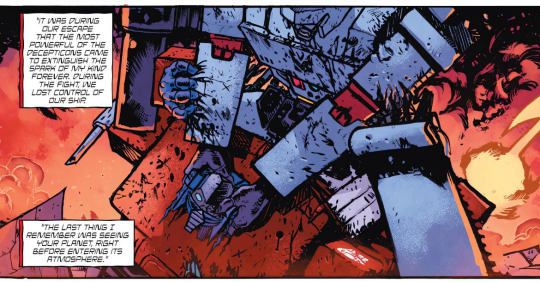
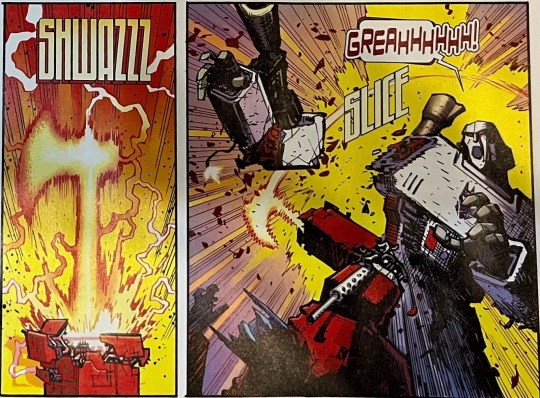
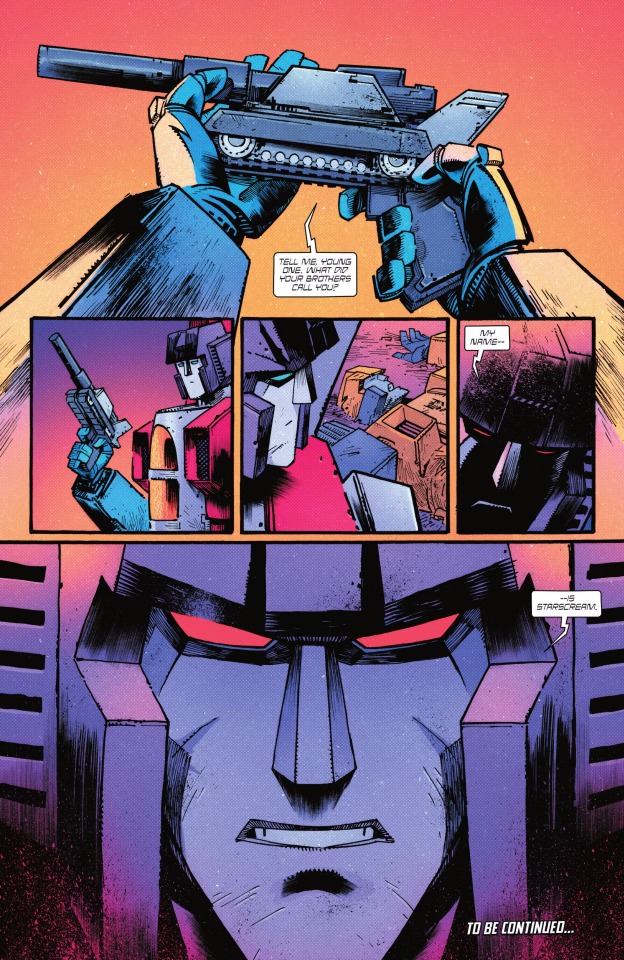
How newer versions of the Great War are shaped post TFONE, within CyberWorld and during Skybound we have yet to see, but however it works in the future will likely depend on which version the creators want to go with Megatron…
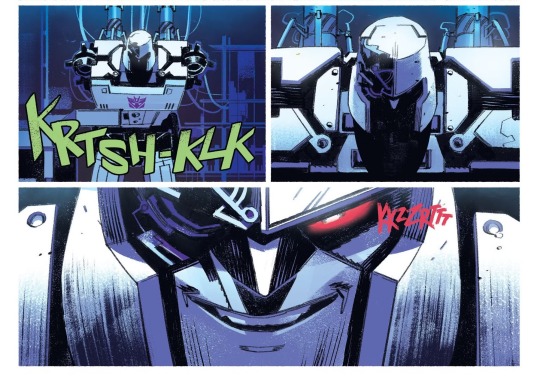
#blueike productions#blueike#transformers#unicron trilogy#transformers g1#maccadam#the great war transformers#transformers one#transformers armada#skybound transformers#energon universe
66 notes
·
View notes
Text
A prominent Ukrainian rabbi has announced that his adopted son has been confirmed dead in battle against Russian forces.
Anton Samborskyi will be buried in Kyiv’s Jewish cemetery on Thursday, Rabbi Moshe Azman announced on Wednesday. Azman and his wife adopted Samborskyi at age 11 after the boy was orphaned, Azman said in a post on X last month when he revealed that Samborskyi had gone missing just weeks after being drafted into the Ukrainian army.
Azman is the rabbi of Kyiv’s Brodsky Synagogue and one of multiple men claiming title to chief rabbi of Ukraine. Since Russia invaded Ukraine in February 2022, he has been a vigorous advocate for the Ukrainian cause, castigating the Russians on social media and posting about his efforts to distribute humanitarian aid and military supplies. He had earlier created a rural village to accommodate Jewish refugees during a previous Russian invasion, called Anatevka after the fictional shtetl in “Fiddler on the Roof.”
Samborskyi — to whom Azman and his wife gave the Hebrew name Matisyahu, in honor of the ancient Jewish priest and military leader — had lived with the family for a decade before moving out, marrying and having a child, according to Azman’s post. It was shortly after Samborskyi’s daughter was born in May that he was drafted, Azman said — reflecting a broader mobilization of troops amid a grueling war that is widely seen as effectively a stalemate.


Exactly how many Ukrainian soldiers have died in battle over the last two and a half years is unclear. The Ukrainian government has not published an ongoing tally but said in February, at the war’s two-year mark, that more than 30,000 troops had been killed. The United States has said it believes the numbers are significantly higher.
Whatever the true tally, the Ukrainian army appears to be strapped for manpower and has intensified efforts to recruit new soldiers, including by lowering the draft age and mobilizing men quickly, sometimes off the streets.
This summer, multiple people associated with Jewish communities in Ukraine said activities had grown more circumscribed because of the threat of being drafted that men face while out and about. In Dnipro, a heart of the Chabad-Lubavitch Hasidic movement, an involved resident told the Jewish Telegraphic Agency last month that men of fighting age were staying home rather than joining in prayer services. And at Ramah Yachad, a Jewish summer camp in western Ukraine, fewer fathers traveled to drop their children off or pick them up, and fewer men were on staff this year.
“Since the beginning of this terrible war, trouble has knocked on the door of almost every Ukrainian — some have lost a loved one, others are fighting with injuries,” Azman tweeted in August, on the occasion of Ukraine’s Memorial Day, when he revealed that Samborskyi was missing. “On this day, I want to share with you my personal pain.”
Two weeks later, he was announcing a memorial service to be held at the synagogue where he has worked since 1995.
74 notes
·
View notes
Text
The German Army 1914-18




The Imperial German Army from 1914 to 1918 was the military force of the German Empire during World War I, under the command of Kaiser Wilhelm II. Known for its discipline, efficiency, and advanced tactics, the army initially saw significant success on the Western Front through the Schlieffen Plan, aiming to swiftly defeat France before turning eastward to face Russia. However, the plan faltered, leading to a prolonged and brutal trench warfare stalemate. German forces were innovative, employing new technologies such as poison gas and stormtrooper tactics to break enemy lines. Yet, despite these advances, the German Army struggled with resource shortages, mounting casualties, and the relentless Allied offensives. By 1918, internal dissent, exhaustion, and the effective Allied counterattacks ultimately forced Germany into retreat, leading to its eventual surrender and the end of the war.
From The German Army 1914-18
#german empire#the great war#world war one#world war 1#ww1#ww1 history#ww1 uniform#german uniform#20th century#1900s#military art#military history#kaiser wilhelm ii
58 notes
·
View notes
Text
things that probably lost the Dems the election:
the economy, and rolling out the ”if you look at this chart the economy is good actually” when people complained about their cost of living.
riding the wave of rage at police violence and border detention in 2020, and then not doing anything about either
trying to court GOP voters by pivoting right on the border issue and seeking endorsements from within the GOP but specifically people that republican voters don’t even like.
failure in Afghanistan and stalemate in Ukraine, with the bill on the military aid rolling on and on.
the Gaza conflict
running Biden again and stubbornly clinging on to him past when it became apparent to everyone he’s not well, and then squandering the new wind for Kamala by saying she wpuld do nothing different from him.
cowardice on other social justice issues, allowing the Republicans to attack them on stuff like trans rights with the only rebuttal being ”no, actually we also passed anti-trans laws”
Harris did have to also deal with the prejudice against her as a woman of color, but it should be noted that she didn’t come last in the 2020 Democratic primaries for no reason. she simply is mot a very inspiring figure, and again her message after being named the candidate was ”nothing will change from Biden”
70 notes
·
View notes
Text
the idea ive been rotating in my head is a lieutenant on Zuko's ship who was kinda sorta on a track to becoming a bit more high ranking in the fire nation military (which is to say he was super skilled but he often got passed over for promotions due to being the bastard son of a low ranking noble and a southern water tribe woman) but he got caught having a relationship w a nobleman and was transfered to Zuko's ship so no one would have to think about him again bc chances were he'd die at sea
ive been watching atla again (the animated one, not the live action) and i kinda. wanna make some ocs
#the fire nation is a facist military state it may not be sexist but i feel like it would be homophobic#bc like. we need ppl making as many children to send off to war as possible and there wont be as many if ppl r having cis gay sex#ALSO. my guy was Very Close w Lu Ten btw :3 and he was there when he died#other things about this guy: he was challenged to an Agni Kai by his nobleman bf's father which ended in a stalemate#bc they almost killed each other
3 notes
·
View notes
Text
In a new article titled “Ukraine’s Lack of Weaponry and Training Risks Stalemate in Fight With Russia,” The Wall Street Journal’s Daniel Michaels reports that western officials knew Ukrainian forces didn’t have the weapons and training necessary to succeed in their highly touted counteroffensive which was launched last month.
Michaels writes:
“When Ukraine launched its big counteroffensive this spring, Western military officials knew Kyiv didn’t have all the training or weapons — from shells to warplanes — that it needed to dislodge Russian forces. But they hoped Ukrainian courage and resourcefulness would carry the day. “They haven’t. Deep and deadly minefields, extensive fortifications and Russian air power have combined to largely block significant advances by Ukrainian troops. Instead, the campaign risks descending into a stalemate with the potential to burn through lives and equipment without a major shift in momentum.”

The claim that western officials had sincerely believed Ukrainian forces might be able to overcome their glaring deficits through sheer pluck and ticker is undermined later in the same article by a war pundit who says the US would never attempt such a counteroffensive without first controlling the skies, which Ukraine doesn’t have the ability to do:
“America would never attempt to defeat a prepared defense without air superiority, but they [Ukrainians] don’t have air superiority,” the U.S. Army War College’s John Nagl told WSJ. “It’s impossible to overstate how important air superiority is for fighting a ground fight at a reasonable cost in casualties.”
Antiwar’s Dave DeCamp writes the following on the latest WSJ revelation:
“Leading up to the Ukrainian counteroffensive, which was launched in June, the Discord leaks and media reports revealed that the US did not believe Ukraine could regain much territory from Russia. But the Biden administration pushed for the assault anyway, as it rejected the idea of a pause in fighting.”
So the empire is still knowingly throwing Ukrainian lives into the meat grinder of an unwinnable proxy war, even as western officials tell the public that this war is about saving Ukrainian lives and handing Putin a crushing defeat whenever they’re on camera.
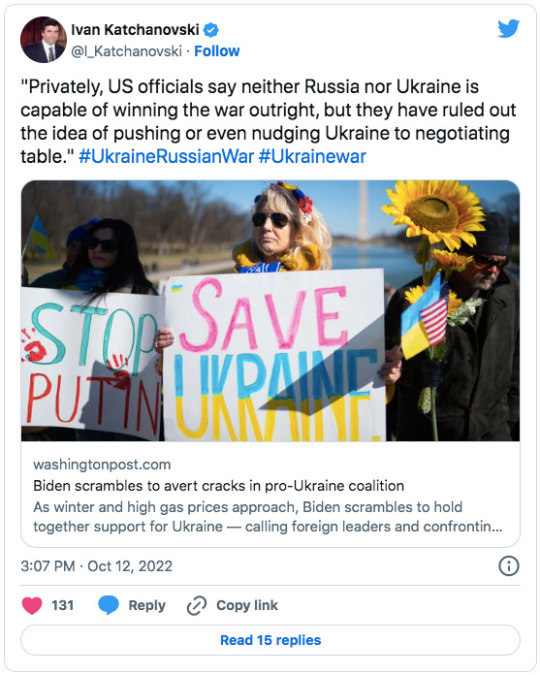
This attitude from the empire is not a new development. Last October The Washington Post reported that “Privately, U.S. officials say neither Russia nor Ukraine is capable of winning the war outright, but they have ruled out the idea of pushing or even nudging Ukraine to the negotiating table.”
Now why might that be? Why would the western empire be so comfortable encouraging Ukrainians to keep fighting when it knows they can’t win?
We find our answer in another Washington Post article titled “The West feels gloomy about Ukraine. Here’s why it shouldn’t.”, authored last week by virulent empire propagandist David Ignatius. In his eagerness to frame the floundering counteroffensive in a positive light for his American audience, Ignatius let slip an inconvenient truth:
“Meanwhile, for the United States and its NATO allies, these 18 months of war have been a strategic windfall, at relatively low cost (other than for the Ukrainians). The West’s most reckless antagonist has been rocked. NATO has grown much stronger with the additions of Sweden and Finland. Germany has weaned itself from dependence on Russian energy and, in many ways, rediscovered its sense of values. NATO squabbles make headlines, but overall, this has been a triumphal summer for the alliance.”
Anyone who believes this proxy war is about helping Ukrainians should be made to read that paragraph over and over again until it sinks in. The admission that the US-centralized power structure benefits immensely from this proxy conflict is revealing enough, but that parenthetical “other than for the Ukrainians” aside really drives it home. It reads as though it was added as an afterthought, like “Oh yeah it’s actually kind of rough on the Ukrainians though — if you consider them to be people.”

The claim that this war is about helping Ukrainians has been further undermined by another new Washington Post report that Ukraine is now more riddled with land mines than any other nation on earth, and that US-supplied cluster munitions are only making the land more deadly.
That’s right kids! We’re turning Ukraine into an uninhabitable wasteland of death and dismemberment to save the Ukrainians.
We should probably talk more about the fact that the US empire is loudly promoting the goal of achieving peace in Ukraine by defeating Russia while quietly acknowledging that this goal is impossible. This is like accelerating toward a brick wall and pretending it’s an open road.
The narrative that Russia can be beaten by ramping up proxy warfare against it makes sense if you believe Russia can be militarily defeated in Ukraine, but the US empire does not believe that Russia can be militarily defeated in Ukraine. It knows that continuing this war is only going to perpetuate the death and devastation.
“Beat Putin’s ass and make him withdraw” sounds cool and is egoically gratifying, and it’s become the mainstream answer to the problem of the war in Ukraine, but nobody promoting that answer can address the fact that the ones driving this proxy war believe it’s impossible. In fact, all evidence we’re seeing suggests that the US is not trying to deliver Putin a crushing defeat in Ukraine and force him to withdraw, but is rather trying to create another long and costly military quagmire for Moscow, as western cold warriors have done repeatedly in instances like Afghanistan and Syria.
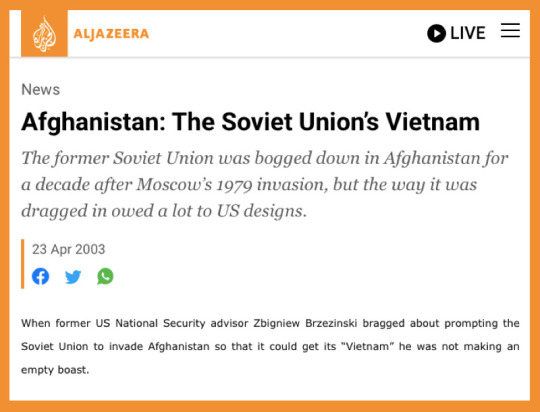
Wanting to weaken Russia and wanting to save lives and establish peace in Ukraine are two completely different goals, so different that in practice they wind up being largely contradictory. Drawing Moscow into a bloody quagmire means many more people dying in a war that drags on for years, with all the immense human suffering that that entails.
The US does not want peace in Ukraine, it wants to overextend Russia, shore up military and energy dominance over Europe, expand its war machine and enrich the military-industrial complex. That’s why it knowingly provoked this war. It’s posing as Ukraine’s savior while being clearly invested in Ukraine’s destruction.
It is not legitimate to support this proxy war without squarely addressing this massive contradiction using hard facts and robust argumentation. Nobody ever has.
#caitlin johnstone#ukraine conflict#us imperialism#nato#nato propaganda#ukraine#russia#united states
354 notes
·
View notes
Text
Humans are weird: The Long War
( Please come see me on my new patreon and support me for early access to stories and personal story requests :D https://www.patreon.com/NiqhtLord Every bit helps)
War’s often did not last long when fought between warring galactic powers. They often fell within one of two categories.
The first would be a short but brutal war in which one side had overwhelming superiority over their rival and would decimate them within a short period of time either resulting in the defeated offering concessions for peace or being incorporated into the victors realm as a new territory.
The second and less frequent of the two would be a drawn out conflict that would reach a stalemate at some point due to the near equal power of the opposing sides resulting in a peace treaty or more likely a cease fire that would last for a few years before resuming hostilities.
These two outcomes were the most frequent as with the age of space travel often came great leaps and bounds in other forms of technology; many times said technology being diverted to respective military industrial complexes.
Weapons that could carve up continents from orbit or snap starships in two like twigs left little in room for anything else.
Humans did not share this notion.
In quite a contrast to the standard norm human military planners also considered lengthier drawn out conflicts. Data sheets and computer banks were filled with projections for supply consumption, industrial production capacities, troop conscription rates, and even the designated planetary ration levels that would be acceptable before general population revolts within their own territory.
This practice was first demonstrated when conflict broke out between the Drumengi and the Terran Republic after a series of trade disputes resulted in the Drumengi seizing several dozen human trade vessels and demanding a ransom for their return. This was a grave insult and the Terran Republic responded the next day with an open declaration of war.
While the Drumengi did not have a sizable fleet, they had invested in a wide range of defensive orbital installations that dotted their territory in what was known as the “Halo of Iron”. No fleet had ever been able to breach the defenses of the Halo and so previous wars had gone for little more than a year before a peace treaty was negotiated. The Drumengi expected as much and planned to force humanity to the negotiation table.
It was unfortunate no one had informed the humans of this plan as the terran’s had already devised a plan to crack the halo.
Establishing a vast network of relay stations, automated satellite weapons platforms, and mobile fleet waystation’s that were brought in and placed along key trade routes into Drumengi territory, humanity established an iron halo of their own. Once the human ring was completed warning beacons were activated and a message was broadcasted in every language declaring the territory an active warzone and refused passage for any ship to try and cross through it.
Initially the Drumengi were inclined this was the prelude to a massive invasion fleet and prepared themselves, but as the months turned to years still no attack came. Human fleets patrolled the surrounding systems and intercepted all ships that tried to breach their lines with the help of the relay stations that were constantly scanning the surrounding space for ships.
Three years passed and soon every ship learned to avoid Drumengi space for fear of human retaliation; and that is when the Drumengi learned the true plan of humanity.
They never intended to besiege their defensive ring in some full frontal do or die charge. Instead they had formed a blockade that now was choking the very life of the Drumengi economy month by month.
It was never intended for the war to last more than a year, two at max, but now humanity was still showing no signs of relenting as the war dragged on to the fourth year. Critical supplies had not been stored in sufficient quantities for an extended war and while the public was assured of an eventual victory, Drumengi planners were beginning to panic. Worlds within Drumengi space were reporting that their stockpiles had dropped 32% since the war began and were increasingly demanding to open negotiations with the humans.
With little offensive capabilities the Drumengi were forced to sit behind their iron halo and continue to wait out the humans. Several delegations had been sent to other powers to open up channels and begin laying the ground work for peace talks, but each time they were informed that the talks were stalled by human counterparts who proceeded to drag their feet over every minor detail. One delegation went so far to report that a human diplomat would not accept any document unless it was written with a “Ballpoint Pen, color blue”. No one had any idea what that was exactly and even after researching it the device took another three weeks to be shipped in only for the human to reject it again saying that they had imported red pens instead.
The war dragged into the fifth year and supply levels had reached critical across the entire Drumengi domain. Supply levels had decreased by 67% for most worlds while fuel levels now were at a critical 13%. Travel was limited to military personnel, government officials, and what limited transportation still remained. Food riots had broken out in several major metropolitan areas on numerous planets and were becoming increasingly difficult to put down. In some cases the magistrates sent to neutralize the riots switched sides and joined the rioters, beckoning the military to get involved as well. That did little to settle the matter however as then the government worried how long it would be until the military switched sides as well.
With heavy hearts and empty bellies the Drumengi leadership finally came to humanity directly and offered to surrender. No terms were asked for save the resumption of trade and the dismantling of the human ring of iron.
The humans agreed to the first measure, but denied the second. Their ring of iron would remain, as a reminder of how easily humanity could cripple them again should the Drumengi ever show their hand again. They also insisted on reparations for maintaining such an extensive grid and exacted a high sum of credits as well. The Drumengi were outraged at this. They were told not only to surrender but to also pay for their imprisonment? The government would be overthrown within a fortnight when the general population heard the news.
Their pleas fell on deaf ears as the humans reiterated their demands once more.
As they had planned ahead for their long war, so too had they planned for the end result. They had changed the nature of the war and had steered it to the point where either outcome would be in their benefit. If the Drumengi agreed to the terms the current government would collapse in on itself as the general population railed against humanities demands, but if they refused their supplies would run out at the general public would once again violently rise up across their entire domain and their territory would become nothing more than mere pocket kingdoms for despots and criminals.
Regardless of the choice, the long war would finally be at an end.
#humans are insane#humans are weird#humans are space oddities#humans are space orcs#scifi#story#writing#original writing#niqhtlord01#war
136 notes
·
View notes
Note
First of all, I love your dinosaur and prehistoric animal art and follow you on Instagram. Second of all, the fact that you're a Transformers fan makes me so happy. Thirdly, can you walk me through a summary of your au? What's the main plot and what makes this one different? I keep seeing something about Megatron being Optimus's father or something?
Thank you, glad that you like my work, And I'm definitely making a dedicated overiew post for the future, but here's the basic summary:
Transformers All-Sparks is an AU that focuses on the lives of Elita, Optimus and Megatron both pre-and-post war. The name represents "The Connection of All Sparks" to another in this AU, with its themes of family, friends and how war and ideology changes a person.
Megatron is indeed Optimus' dad, being born of a piece of both his and Codexa's sparks. Reproduction takes many forms in this AU, and will have its own dedicated section one day.
The main plot of All-Sparks centers around two point in history: Pre-Great Exodus and Post-Great Exodus.
Before the Great Exodus, it focuses on the famililal lives of Clan Pax and Clan Carcer, Orion's family and friends, and witnessing how Orion's dad goes from loving family bot to "the subjugator of Iacon". It all starts because, one day, Megatron takes a fall for a crime he didn't do to protect a friend. He forever gets branded as a Convict, and the rest is history, as Megatron is forced to fight in pit after pit, and becomes increasingly furious of just how wrong Cybertron and its institutions are... and especially disdainful of the rank of "Prime", and soon gets a cult of personality following growing. One worldwide revolt later, an accidental fusion cannon shot and ressurection later, and you have all of Cybertron duking it out with one another.
After the Great Exodus, the Autobots have established themselves in multiple fortress worlds and allied alien species. They can do this because The Great Exodus is one of the perhaps the biggest logistical feat known to botkind. The Autobots, while at a numerical disadvantage, are very much still a potent force in the galaxy, to the point that they've managed to contain the Decepticons to a stalemate, but one that can shift at any moment. The Search for Energon is something vital for both factions, some planets are naturally rich in it, some aren't. Allspark fragments are especially prized, because they're not just as energon sources, but in what they can do with the forces of creation (though that's easier said than done).
The Ark crash lands on Earth much later than in most continuities, with Grimlock guarding it for the past 20,000 years. Sometime during the late 80s, Hot Rod (and friends), finally bring enough Energon to awaken at least some of the Autobots, Optimus and Elita included. And so, with that, Earth will soon become part of Cybertron's war... whether they realize or not.
Some worlbuilding tidbits that's prevalent of this AU.
Cybertron is the home planet, but is also referred to as the Worlds of Cybertron. Before the great war, Cybertron is actually very well integrated with its colonies, including Caminus, Velocitron, Devishun, Eukaris and many more. Even Quintessa is considered part of the Worlds... but they're also the most prone to rebellion. The war on Cybertron becomes a full blown Cybertronian Civil War once factionalism arrives in many of the worlds.
Faction organization is prevalent here: The main factions are Autobot and Decepticon, but there are sub-factions that help out their main faction. Maximals are the organic-disguised arm of the Autobots, bringing their already-well known experience and knowledge in navigating organic worlds and military professionalism into the greater whole. Predacons serve as this to the Decepticons, but are more like a personality-cult-within-a-cult, as they were founded by a Razorclaw inspired by the "take power with your own two hands" philosophy of Megatron.
Autobots also have The Knights of the Circle of Light (The successors of the Temple Guard who protected the Temple of the Thirteen, now a colossal space-faring vessel) and the Espionage Corps (The Cyberninja Corps in all but name), and the Autobot Diplomatic Corps (who help maintain the relations with aliens).
Inspired by Ben 10, Marvel and many other works, Aliens have a presence in this AU, because you can't have a giant galactic-scale war without bringing your problems onto other worlds.
#all-sparks au#transformers all-sparks#ask#swamplinglvr#all-sparks#transformers au#transformers#elita one#orion pax#optimus prime#megatron#worldbuilding
21 notes
·
View notes